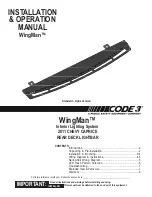
How to change a tyre
8-16
For emergencies
8
6. Remove the wheel nuts with the wheel nut
wrench, then take the wheel off.
7. Clean out any mud, etc. on the hub sur-
face (G), hub bolts (H) or in the installa-
tion holes (I) in the wheel, and then mount
the spare wheel.
8. Turn the wheel nuts clockwise by hand to
initially tighten them.
Tighten the wheel nuts until the flanges of
the wheel nuts touch the wheel and the
wheel is not loose.
9. Put the notch (K) provided on the jack
handle end on the valve (L) of the jack.
Using the jack handle, turn the release
valve anticlockwise slowly to lower the
vehicle until the tyre touches the ground.
Do not use a jack except the one that came
with your vehicle.
The jack should not be used for any pur-
pose other than to change a tyre.
No one should be in your vehicle when
using the jack.
Do not start or run the engine while your
vehicle is on the jack.
Do not turn the raised wheel. The tyres
still on the ground could turn and make
your vehicle fall off the jack.
CAUTION
Handle the wheel carefully when changing
the tyre, to avoid scratching the wheel sur-
face.
WARNING
WARNING
Mount the spare wheel with the valve stem
(J) facing outboard. If you cannot see the
valve stem (J), you have installed the
wheel backwards.
Operating the vehicle with the spare wheel
installed backwards can cause vehicle
damage and result in an accident.
CAUTION
Never apply oil to either the wheel bolts or
the nuts or they will tighten too much.
NOTE
If all 4 aluminium wheels are changed to
steel wheels, e.g. when fitting winter tyres,
use tapered nuts.
















































